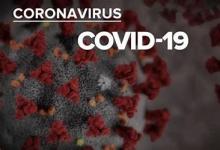Vaccine
Most experts think a vaccine is likely to become widely available by mid-2021, about 12-18 months after the new virus, known officially as Sars-CoV-2, first emerged.
Four coronaviruses already circulate in human beings. They cause common cold symptoms and we don't have vaccines for any of them.
America's top infectious diseases expert, Dr Anthony Fauci, has said that "we could start talking about real normality again" in 2021. Although a coronavirus vaccine could be determined "safe and effective" by the end of the year, he doesn't expect it to be widely available in the US until "several months" into 2021.
"I think we will likely know whether a vaccine is safe and effective given the number of phase three trials that are starting literally next week - and there are some in other countries that are already ongoing - that we should know by the end of December of this year, the beginning of next year," he told the Washington Post.
"I think as we get into 2021, several months in, that you would have a vaccine that would be widely available to people in the United States."
- Read more about Vaccine
- Log in or register to post comments


